We are almost 2 years familiar with COVID, and the amazing hospital nurse is overworked and extremely burnt out!
Luckily, they’re realizing the astounding number of other nursing specialties at their disposal.
And fortunately for our country’s robust, overflowing, and exponentially growing chronically ill population of citizens who require a nurse to liaison between them and their primary care providers, one of the hospital nurses’ first choices for a renewed life in nursing happens to be home health care.
Although many nurses may have been told a vast range of the typical “home health nurse horror stories”, they seem to be persevering, and remembering that negative stories travel faster, longer, and with many more internalized emotions than the more frequent positive and fulfilling nursing experiences of most home health nurses.
And the question they wish to have answered more than “Are we ever going to move away from 12-hour shifts?” is…
“What should a nurse switching to home health know, and how can I set myself up to be a confident and successful home health nurse?“
To be completely transparent and honest, there are a trillion things nurses can do to be successful home health nurses and should be aware of, but in the spirit of getting straight to the point, and addressing the issues that actually cause nurses to “exit stage right” long before reaching their first 30 days of being a home health nurse…let’s jump right into the introduction of the Faithful Five™.
The Faithful Five™ are 5 tips that if followed and adhered to “faithfully” a nurse aspiring to be a successful home health nurse will have no problem with becoming successful while staying true to and protecting themselves.
The Faithful Five™ are:
- Know the difference between a Private Duty Nurse and a Home Health Nurse.
- Understand your responsibilities as a Home Health Nurse, as well as the boundaries you’re expected to work within.
- Identify your TRNsition-Gap™, and find YOUR source of training, education, or mentorship to bridge it.
- Don’t fall victim to the “double documentation” philosophy, and defend your right to create your own positive experience and narrative as a home health nurse.
- Unapologetically protect YOU, YOUR mental health, and YOUR nursing license.

KNOW THE DIFFERENCE BETWEEN A HOME HEALTH NURSE AND A PRIVATE DUTY NURSE.
Many tend to use Private Duty Nurse and Home Health Nurse interchangeably, or just plain assume that they are the same thing, but you know what assuming does…wink!
In an attempt to clear the air, at least for nurses who are considering entering the Home Health field, you could consider a Private Duty Nurse to be a type of Home Health Nurse or a specialty of its own. Either way, they are both different and the diagram below can help you suss out the differences.
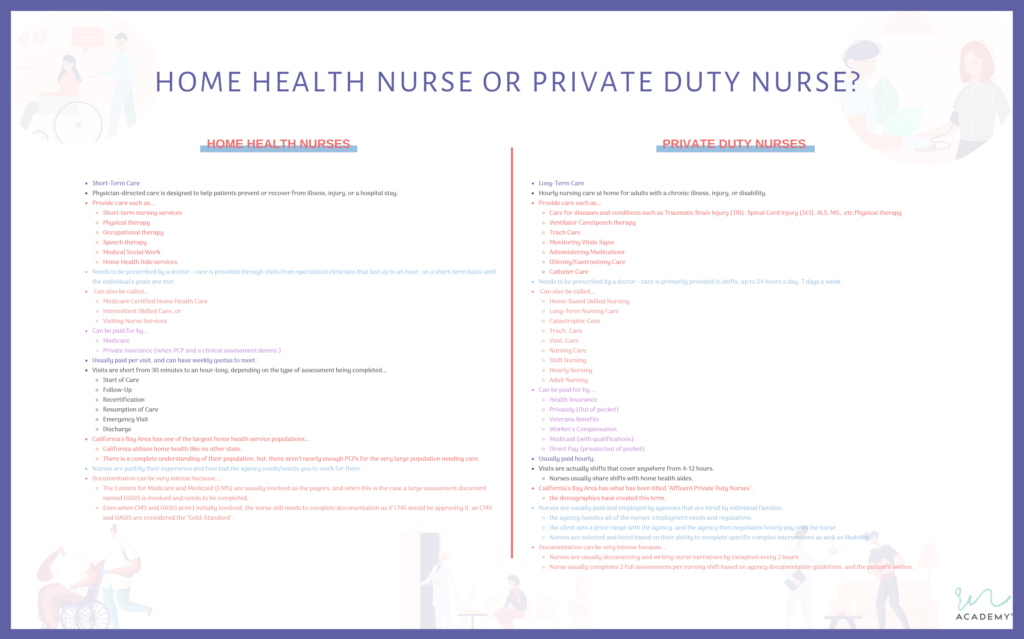
UNDERSTAND YOUR RESPONSIBILITIES AS A HOME HEALTH NURSE, AS WELL AS THE BOUNDARIES YOU ARE EXPECTED TO WORK WITHIN.
As a home health nurse, you will have a specific set of responsibilities, as well as boundaries that you’ll need to work within in order to be productive, effective, and legally protected.
You’ll already have your generic nursing responsibilities laid out by your state’s nursing regulations and practice acts. Your next level of guidance will come from the rules and regulations set forth by the Centers for Medicare and Medicaid Services (CMS), then comes those set by your agency, and most importantly comes YOUR individually developed rules, which I like to call your Comfort Guard Rail™ because, in all reality, it is just that…it’s the level of comfort you’ve built up for certain circumstances and situations, and your level of comfort defines how you respond along with the amount of confidence you exude during different situations.
After thoroughly sifting through and labeling your Comfort Guard Rail™, you need to do the same for your Fuel Guard Rail™, which is your capacity to give of yourself to your patients, while still maintaining a basic level of energy, emotion, happiness, etc. for those you choose to prioritize, and yourself.
Understanding your Fuel Guard Rail™ is important because it will enable you to better use and distribute your energy, distribute your positive energy where you decide, present to your patients as your “Best Self”, while protecting yourself during your most vulnerable moments, and it helps you identify which attributes of home health make your “zone of genius” list, or if home health is really where you feel the happiest and demonstrate the most productivity and forward movement towards your future goals and aspirations.
Your Fuel Guard Rail™ also prevents you from being completely spent by the time you get home each day, because if you still have a life to live after your workday, your significant other, kids, or pets may still be looking at you like “so, you said dinner was where?”.
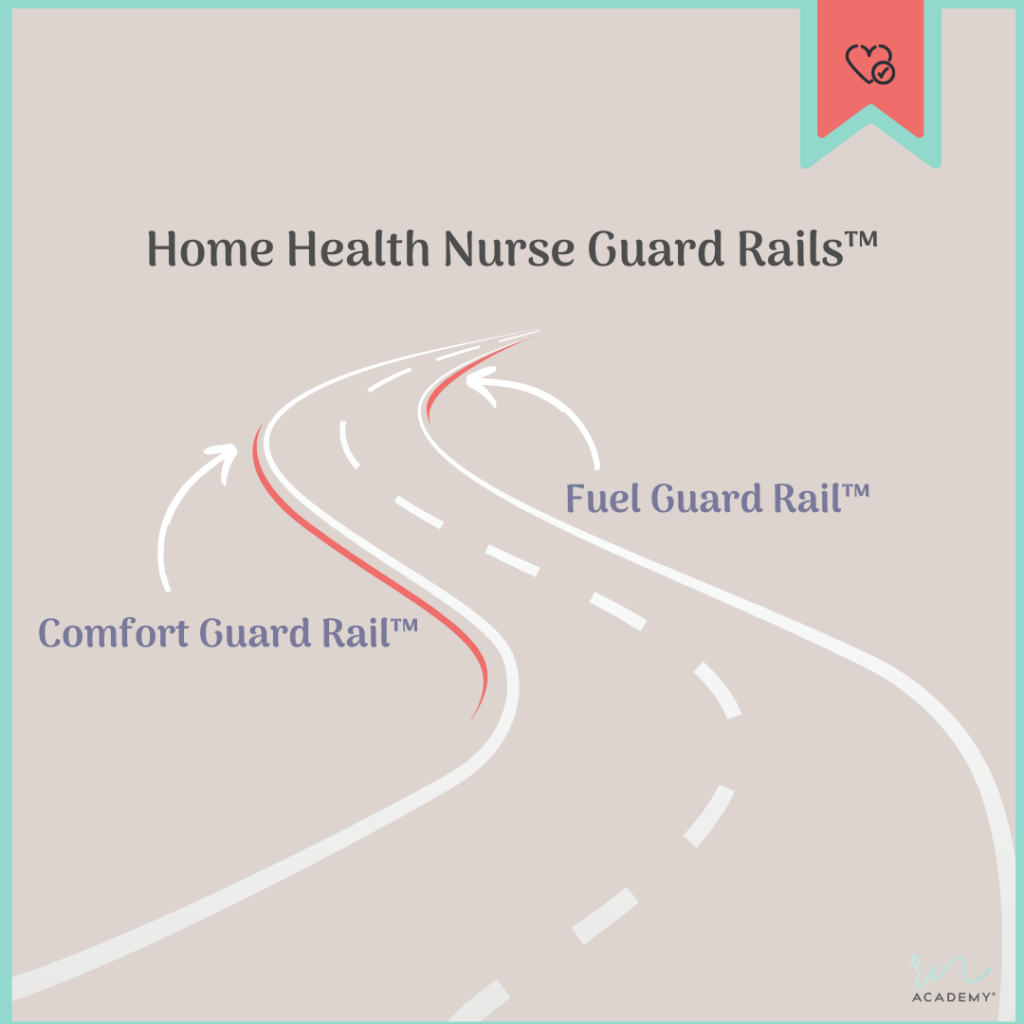
You can start identifying your Comfort and Fuel Guard Rails™ by thinking about the
- Types of interactions, assessments, and even individuals that energize you or exhaust you, make you excited and happy, or makes you shut down and sad,
- What has or hasn’t happened in those moments where you feel indifferent and stagnant, and
- In those moments when your patients pay you the biggest compliments…in those moments…are you happy doing whatever the compliment was for?
Throughout this identification process, just remember that if you want to be a successful home health nurse, you have to understand your Guard Rails, and no matter the size of your “nursing” contributions (be it your emotions, mental capacity, empathetic availability, relationships, etc.) to your patients and their assessments throughout a day, the amount of “fuel” or “self-care” needed to refill your cup only gets larger and more profound after each interaction.
IDENTIFY YOUR TRNSITION-GAP™, AND FIND YOUR SOURCE OF TRAINING, EDUCATION, OR MENTORSHIP.
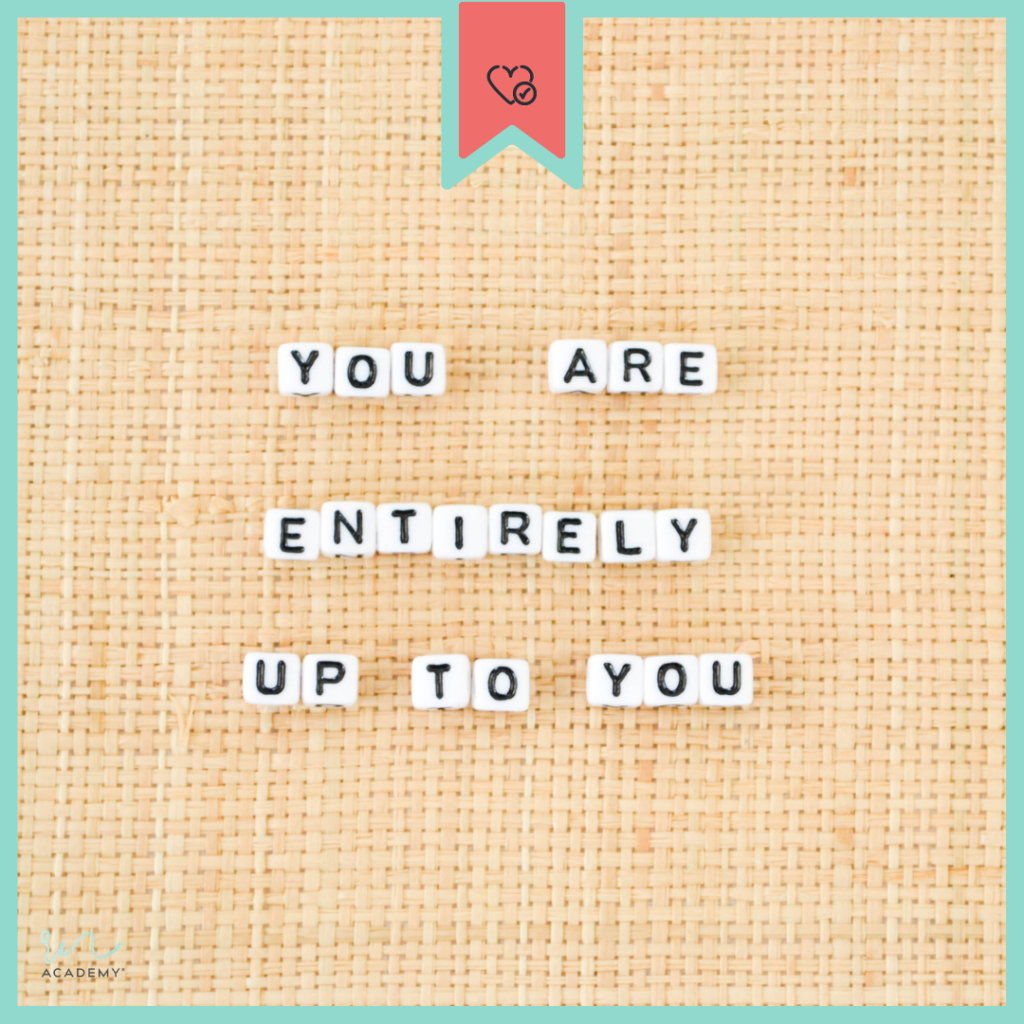
There are so many ways to catch your stride as a new home health nurse, and for the record, you DO NOT have to go through your transition alone. Just to fairly set your expectations, there will be moments when things seem dire and overwhelming, but when starting out in a new field, this is expected.
Fortunately, you have a superpower that I like to call your Nurse-Personality™, and this personality is the character and essence you created and embodied to make it through nursing school and all of its challenging times. You’ve done the hardest part…you completed nursing school and became a Registered Nurse! Now, pull on your already dialed-in Nurse-Personality™, which you’ve been honing through all of your previous nursing experiences to push and motivate you through bridging your TRNsition-Gap™.
With all the mentions of TRNsition-Gap™, I’m sure you’d like to know exactly what it is. Your TRNsition-Gap™ is your individual set of “don’t know” or “I’m uncomfortable with” information that originates from your switch from a previous nursing specialty to home health nursing. Keep in mind that, all gaps don’t necessarily need to be bridged, but when you’re talking about your hard-earned nursing license…bridging it is!
This is the precise point where you want to find YOUR source of training, education, or mentorship to bridge your gap, but also a point where most new home health nurses start a cycle of making “less than productive” decisions that are based on the opinions and misconceptions of others. It’s really important for new home health nurses to be tuned in and progressive at this moment because it sets the tone and stage for your success moving forward.
One of the first and most recurrent misconceptions of new home health nurses is that…
“Their agencies’ are responsible for training and educating them to be successful home health nurses”.
And this couldn’t be farther from the truth, and here’s why.
It’s your agency’s responsibility to get you acquainted with their specific mission, policies, procedures, and a very generic home health training that brushes up on skills that may not have been consistently performed in other nursing specialties, but there is no way for your agency to know what YOU need to be a successful home health nurse…ONLY YOU CAN COMMUNICATE THAT, and in order for you to communicate that you need to feel and have a level of trust for your agency.
At the point when you’re just starting out as a new home health nurse and getting to know your agency, you’re just at first base. So, assumptions and judgments are made that start new home health nurses on a path of ”trial-by-fire“ or “faking it until you make it”, which ultimately leads to tarnished reputations and nursing licenses.
When the truth is, you need to own what you don’t know (your TRNsition-Gap™ ) and seek additional individualized home health nurse + OASIS training independent of your agency. In most cases, it’s more effective and comfortable for nurses switching to home health to receive training outside of your agency because it…
- Allows the new nurses the opportunity to be completely open about their education and training needs, without feeling or being judged.
- Provides a unique space for the new nurses to learn and grow their skillset without subconscious negative assumptions, bias, or effects on their performance evaluation from their agency.
- Provides the new nurse with a level of freedom and independence in knowing that their education and training are NOT tied to any SPECIFIC agency, therefore they’re empowered to leave any agency or work situation that isn’t a healthy fit without a worry of having to pay their agency back financially or with a certain amount of “pay-back” time.

In being new to home health, you need to keep in mind that this is YOUR education, and it’s NOT your agency’s responsibility to ensure that YOU succeed, only YOU can guarantee that…SO BET ON YOURSELF EVERY DAMN DAY (excuse my language…it’s all passion!)!
By no means am I anti-agency, however, I am unapologetically Pro-Home Health Nurse!
To be clear, there is a subset of nurses who will receive all that they need from their agencies, which is absolutely AMAZE-BALLS, but for the larger percentage of new home health nurses who do not…
- Figure out what you don’t know → YOUR TRNSITION-GAP™
- Find an education source to bridge your individual gap → OWNING YOUR TRNSITION-GAP™
- Stay consistent with whatever training YOU choose → USING YOUR NURSE PERSONALITY™
- PRACTICE, PRACTICE, PRACTICE! → WITH PRACTICE COMES SPEED + AUTOMATION
Our Creating Your Successful EntRNce™ to Home Health Nursing (also known as CYSE) program includes 4 courses that cover specific pieces of the TRNsition-Gap of a nurse newly switching to home health nursing, and you can check that program out by clicking the button below.
When following this approach, you get the best of both worlds. You get the full benefit of your agency’s training and orientation (which is a more generic approach), with the full benefit of your independent training (which is an individualized nurse-centered approach), which enables room for you to ask the agency-specific questions that you come across during your independent training. This will always result in you being able to apply your individualized nurse-centered training to any agency you decide to work for.
DON’T FALL VICTIM TO THE “DOUBLE DOCUMENTATION” HYPE, AND DEFEND YOUR RIGHT TO CREATE YOUR OWN POSITIVE EXPERIENCE AND NARRATIVE AS A HOME HEALTH NURSE.
Without a doubt, I can tell you that you’re going to hear…
“Well isn’t writing all of my patient’s information on paper and then placing it in the computer, just double documentation?”
And YES, it is double documentation by definition, but I challenge you to think about those moments when…
- You’ve switched home health agencies, or
- You’re out seeing your patients for the day when another call comes in asking you to advocate for another patient that you aren’t scheduled to see that day, or
- You can’t seem to get an internet connection to log in to your agency’s database to even start your OASIS assessment electronically, and the list goes on…
Technology is GREAT, but when a person’s life is on the line, along with your hard-earned nursing license…is it REALLY worth dying on that hill of “DOUBLE DOCUMENTATiON”?
I could literally write a book about the benefits of having a hard copy of your patient’s data, instead, I’ll just say that no matter the timeline, if mistakes were made and your name is present on a patient’s file, you need to be able to protect your nursing license, and the best way to stay on top of the care that you’ve provided is through the documentation that you have in your possession because no matter where you’re working at that moment, you still have access to your intervention data, and when your copy is in your possession, no one has access to it to change or modify your documentation without your permission.
Lastly, you owe it to yourself to experience home health nursing from your perspective while creating your very own experiences and narratives. So, don’t allow the experiences and horror stories of other nurses to consume you or your approach to home health, because you could definitely miss out on an amazing opportunity to be happy, fulfilled, and maintain a work-life balance all while providing the best care to patients who actually depend on you in order to have the chance to live and function in their homes independently
UNAPOLOGETICALLY PROTECT YOU, YOUR MENTAL HEALTH, AND YOUR NURSING LICENSE.
This tip is so important because ultimately, the mistakes of others can fall on you unless you have YOUR documentation to protect you. The best way to protect yourself with your documentation is to again, get to know yourself, and place processes and Youtines™ in place that work for you!
Here are 3 main reasons why getting to know yourself is important for home health nurses to. . .
- Be able to identify your TRNsition-Gap™.
- Understand your Fuel Guard Rail™ and your Comfort Guard Rail™.
- Craft and practice different strategies for streamlining your OASIS assessments.
Next, you want to create and practice Youtines™, and what are Youtines™ you ask? A Youtine™ is following your natural flow or rhythm to figure out what works for YOU, in a given situation, that produces the results that YOU are looking for. This means, the exact inner workings of your Youtine™ could change daily, as long as you have a process that accounts for YOUR rhythm, and produces results that work for YOU!
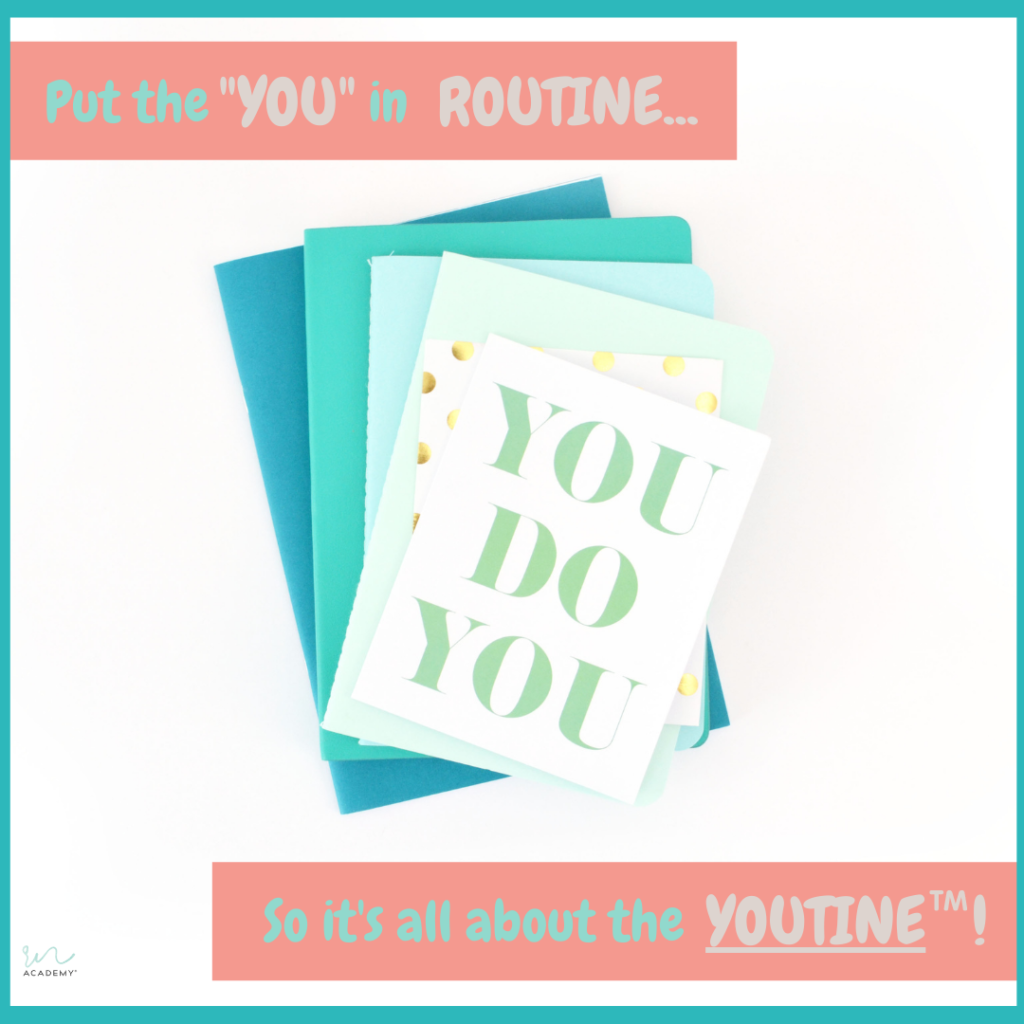
Youtines™ are the simplest forms of routines that make YOU the focus and at their best “You” replaces the “Rou” that’s dictated by the popular habits of a chosen few, which turns the typical routines into individualized Youtines™.
It allows you to remove the stress of trying to follow the morning + evening routines of others, or being anxious about having to get “IT” exactly right the first time around”.
Instead, Youtines™ allows you to, think about “What can make accomplishing your top outcomes for the day FEEL NATURAL, A SMOOTH PROCESS, and EASILY ATTAINABLE based on how you’ll FEEL when you awake in the morning”.
In order to create your Youtines™, you first need to remember that your inner monologue is present and a part of you for a reason. Not to mention, that ignoring any part of your intuition is selling yourself short on your opportunities to grow as a person.
Secondly, keep in mind that Sundays or Mondays or whichever day you choose as the start of your week is just that…the start of your week. Meaning, it gives you the opportunity to redo all the weeks prior in a way that better flows with you. It’s the first day of the week when you can decide on your official “vibe” for the rest of the week. It also allows you to know what you’re doing for the week, figure out your priorities, and “MUST HAPPENS”.
Most importantly, you get to think about your days and weeks in terms of “OUTCOMES”, and ask yourself “what do I want to happen or have accomplished by the end of each day or week?”, replacing the typical “daily task list”, because you can check off a million boxes and still feel like you have the world on your shoulders, and you’ve accomplished nothing!
Youtines™ should also include a window of rest and mental health check-ins. Having this rest window is extremely important as it functions like your vacation from the week, giving you a mental and physical break. After all, just because you’re responsible for the health care of others, that doesn’t give you an excuse to “not take care of yourself”!
And when you have a lot to get done, don’t forget to plan a well-deserved reward for later in the day so you have something to look forward to.
Next, you want to normalize regular mental-health check-ins because it:
- Allows you to empty and unload your negative thoughts and worries into a safe space (to ensure that your anger and disdain are projected in the right direction).
- Provides you with a perspective on how to approach recurring situations (or assessment types and manager conversations) in a more positive and effective manner.
- Provides you with awareness of the areas, aspects, or situations you need to change in order to protect your healthy, positive space and well-being (so you can do your best to always present the best version of yourself to those you love as well as your patients).
Remember, it’s okay to get help! Don’t let lack of time, the opinions or bad experiences of others, or even your unfounded misconceptions stop you from seeking support.
Take the time to give yourself some self-love by…
- STEP #1 – Take the time to get to know yourself, your strengths, weaknesses, Comfort, and Fuel Guard Rails™.
- STEP #2 – Find a way to track your daily feelings, energy output, and exhaustion levels (and “no” it doesn’t have to be with a planner…it’s what works for you!).
- STEP #3 – At the end of every week, review what made you the happiest, what made you feel like you were moving forward with your life and progressing, what gave you butterflies and instantly activated wall building, what made you “shut down”, what made you uncomfortable, what played into your fears, and what’s your absolute worst nightmare and how have you protected yourself from making that nightmare a reality?
Cycle through the 3 steps above on a regular basis so you know the answers to these questions, which leads to you being able to better position yourself to be mentally present to acknowledge your detrimental habits, that are blocking your prosperous productivity, and ultimately do better for yourself, your family, and your patients.
When it comes to your actual OASIS assessments, you need to streamline all things OASIS by finding a planner or planning system that can hold everything you need it to hold in order to be prepared for all of those moments that count towards you…
- Being prepared,
- Advocating for your patients in those moments that mean the MOST to THEM → positive patient rapport building…wink!
- Standing out + “OWNING” your genius as a successful home health nurse →TREAT YO’SELF TO A PROMOTION 2024!
You could even take it a step further and get your favorite pen and notebook to work out your point amounts for each type of your OASIS assessments and decide which assessments work best for you, your energy, and your mental wellness. Then, put together your weekly OASIS assessment load based on YOUR individual needs.
To give you a really quick win, you can easily start streamlining your OASIS assessments by…
- Clearly identifying what your agency expects of you for the week,
- What your bank account NEEDS from you for the week, and
- Where your energy, personal health, and mental well-being can healthily bridge the two.




Our JouRNal™ Planner for home health nurses allows you to prepare for, record, and track your OASIS assessments in one place while building evidence and supporting documentation for your performance evaluations. You can check it out by clicking the button below.
All in all, home health nursing is an amazingly autonomous nursing specialty that comes with its own set of trade-offs, that many nurses switching to home health never get to positively experience due to the overwhelm of horror stories from other nurses, and the lack of accountability and understanding related to new nurse education and training.
In order to be a successful home health nurse without placing your nursing license or values at risk, follow the Faithful Five™ tips of a successful tRNsition™ to home health nursing. The Faithful Five™ include:
- Knowing the difference between a Private Duty Nurse and a Home Health Nurse.
- Understanding your responsibilities as a Home Health Nurse, as well as the boundaries you’re expected to work within.
- Identifying your TRNsition-Gap™, and finding YOUR source of training, education, or mentorship to bridge it.
- Avoiding the “double documentation” philosophy, and defending your right to create your own positive experiences and narratives as a home health nurse.
- Unapologetically protecting YOU, YOUR mental health, and YOUR nursing license.
Home health nursing has so many benefits that outweigh its early learning curve, but without a doubt, you are better prepared to be a successful home health nurse when you know and are aware of the expectations upfront. The key is to educate yourself without carrying or absorbing the negativity related to the experiences of other nurses or playing into misconceptions. Instead, decipher the lessons that were meant to be learned from the horror stories, and misconceptions.
You’ve already turned the unthinkable into a Registered Nurse career, just keep that same energy + pair it with your Nurse Personality = Successful Home Health Nurse!
YOUR ACTION ITEMS:
- Take a moment to think through what I’ve shared about being a successful home health nurse without losing yourself or your nursing license.
- Think about where you are with planning your OASIS assessments, and check out the JouRNal™ Planner to get a head start with streamlining your OASIS assessments.
- Get my direct help with your unique home health nursing situation or question (privately, with NO judgment) by clicking here to check out our new LeaRN-On-The-RN Session to get your questions answered.
Remember, we RN this together!
Until next time…stay safe 🙂

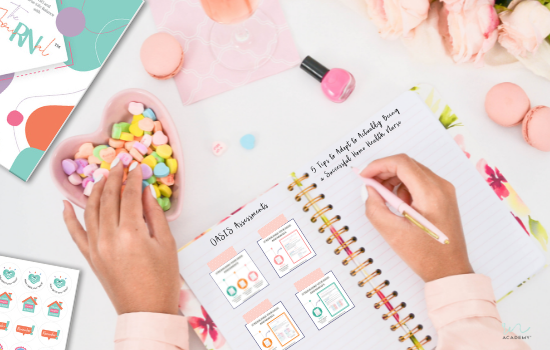


share this post on
comments
0
leave a comment